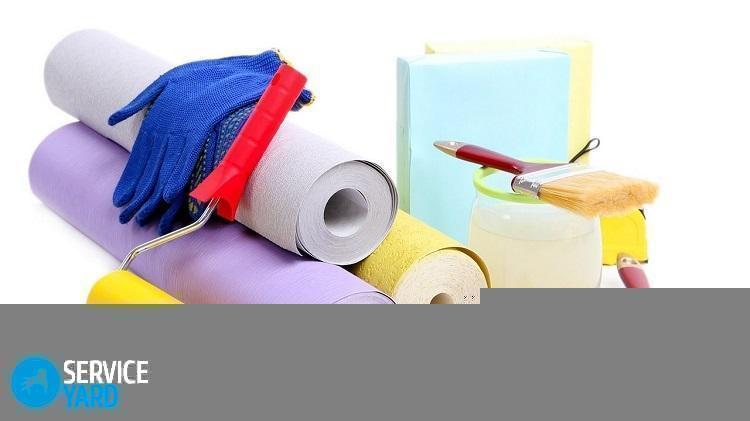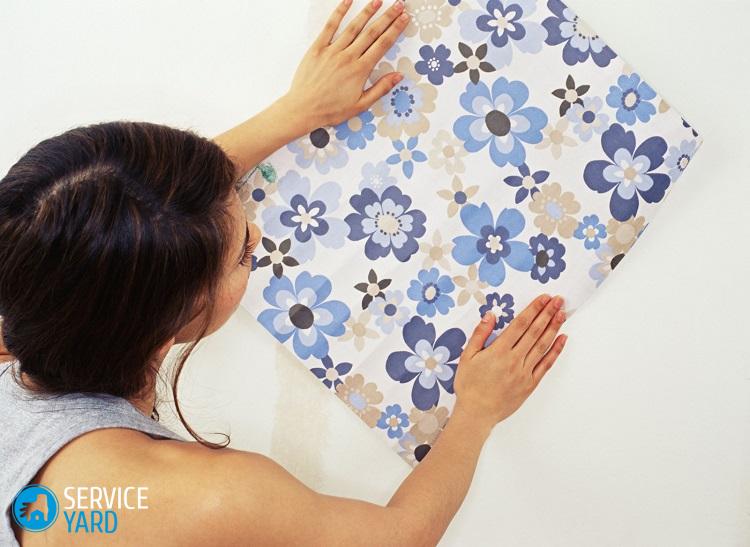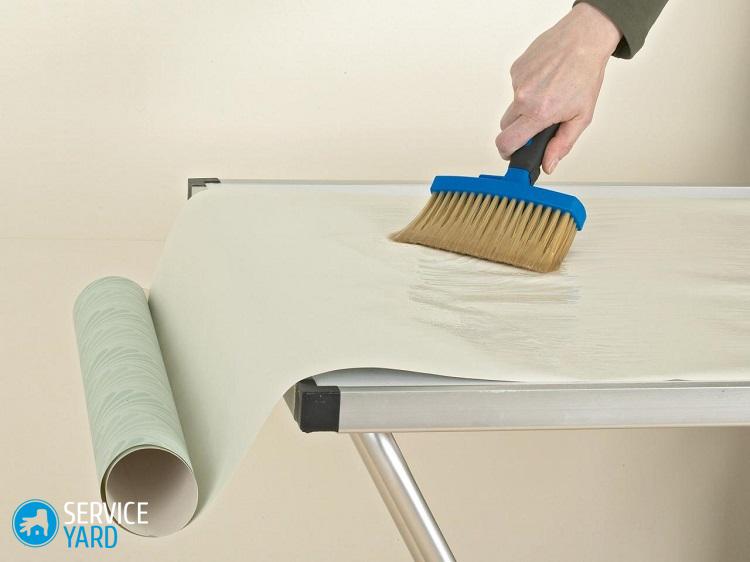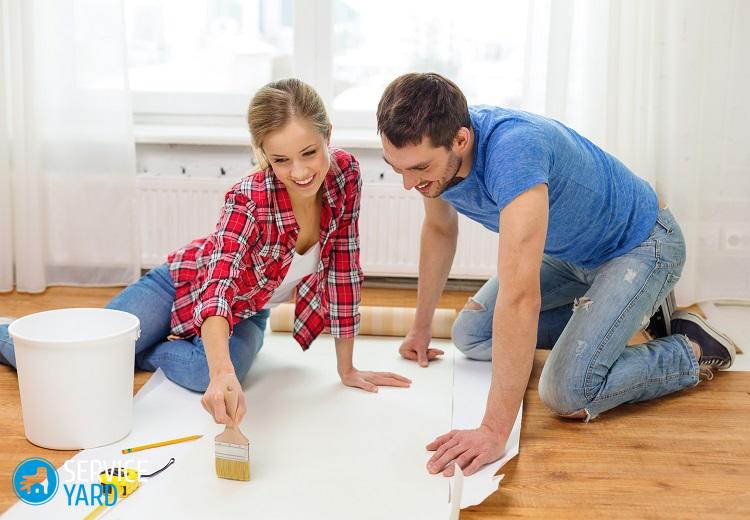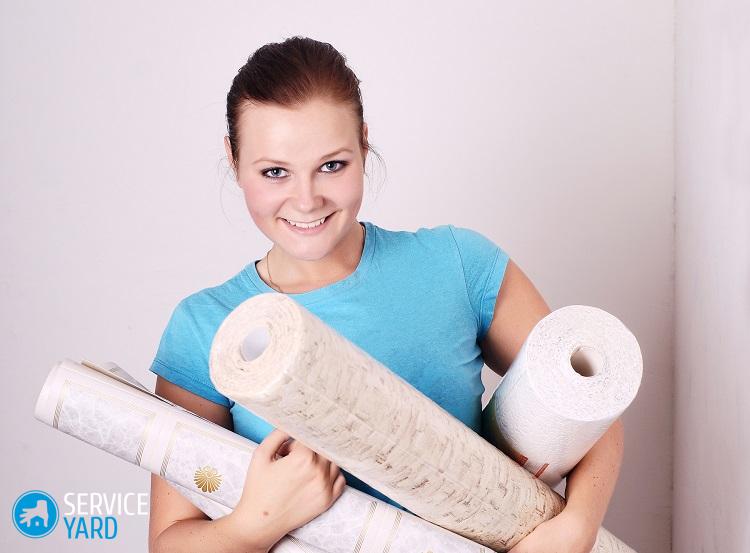How to breed wallpaper glue?
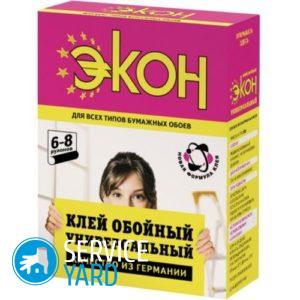
As a rule, wallpaper glue is acquired together with rolls of wall covering. Knowing the properties of the wallpaper and the type of surface on which it is necessary to stick the panels, it is not difficult to choose the adhesive composition. In addition, competent sales consultants work in building materials stores, ready to help with the selection and advise the material that is optimal for the particular situation. Proper selection of materials is a very important point, but you also need to correctly use the purchased materials. Let's talk about how to spread glue for wallpaper so that the quality of finishing work does not disappoint you.
to contents ↑Adhesive Consumption
Most manufacturing companies put information on their approximate consumption per square meter on the packaging with glue. Naturally, the consumption of glue for non-woven wallpaper is different from the paper counterpart. Unfortunately, the real costs are usually completely different. The fact is that each use of wall decoration material is unique in itself. The actual consumption of glue (less or more than the figure indicated on the package) is influenced by the specific conditions in which the finishing work is carried out.
Important! The greater the mass of wallpaper panels, the greater the density of the adhesive mass.
Actual question: is it possible to save? To reduce the working expenditure of the fixing composition by about 30% in this way:
- Use the primer on the wall surface not once, but twice.
- Use glue from the same manufacturing company as the wallpaper.
Important! The structure of the wall largely affects the consumption of the composition. Much more glue requires a surface with a rough and porous structure, compared with smooth and dense analogues.
How to dilute wallpaper glue? Approximate consumption of adhesive mass for different types of work:
- If the surface needs to be pre-primed, the dry mixture is diluted with warm water in a proportion of 1:40. This approximately corresponds to a 300 gram pack per 12 liters of water. The resulting solution will be enough for about 100 square meters of concrete or brick walls.
- For gluing textile, vinyl or structural panels, a sufficiently thick mass of glue will be required. For 300 g of adhesive powder, 6 liters of water will be required. This corresponds to a fractional ratio of 1:20. This is quite enough for high-quality gluing of 36.5-40.3 "squares". Wallpaper glue for non-woven wallpaper is bred in about the same proportion.
- The use of thin wallpaper does not require such a thick solution. The optimum ratio of the powdery fixative to water is 1:30 (9 g of water is needed per 300 g package). With proper work, this amount of solution will be enough for 45.5-50.3 m2 of surface.
Glue application principles
The process of wallpapering the walls itself consists of the following stages:
- Wall preparation.
- Preparation of adhesive solution.
- Sticking panels on the walls.
Let us consider in more detail the specifics of each of the stages.
Surface preparation
The entire front of the work consists of the following actions:
- Cleaning the old coating to the bottom. Wallpaper must be thoroughly soaked with water and removed with a spatula. The tiles are knocked down, and the paint is removed chemically using a special solvent.
- Surface alignment. At this stage, close cracks, cracks and other defects with paste-like plaster.The protruding sections are removed using a compact chipper or jackhammer. After the manipulations are done in full, the surface is cleaned with sandpaper. This is followed by cleaning the wall of dirt, putty, followed by leveling with fine-grained sandpaper.
- Primer walls. This is a mandatory step, which many, unfortunately, neglected. Priming is necessary in order to make the base more durable, to increase the adhesion of the panel with glue. Using a primer can significantly reduce the consumption of the fixative.
- Drying of primed surfaces. As a rule, it takes 3.5-4 hours.
How to dilute wallpaper glue?
First of all, you must carefully read the instructions. Most often, the cooking algorithm is as follows:
- In the enameled or plastic container, water is poured in the required volume.
Important! If you use cold water, the powder will dissolve twice as slow. When using warm water, the composition dissolves very quickly.
- Dry mixture is poured into the container, constantly mixing, so that clots do not form. To make the glue uniform, it is convenient to use a drill with a special mixer nozzle or a construction mixer. You need to know in advance what consistency should be the glue for wallpaper.
Important! It is convenient to prepare the glue together with an assistant: one - sprinkles the dry mixture into water, and the other - stirs.
- The solution is kept for about 15 minutes, until it is completely homogenized.
- Mix the mass again. After that, she is completely ready for finishing work.
Wall stickers
This process is very simple and comes down to the following points:
- Precise material cutting.
- Accurate lubrication with glue of panels or walls (depending on the type of wallpaper).
- Sticker sheets on work surfaces.
However, there are a few specific points:
- When using thin paper panels, only the surface of the walls is smeared with glue. Glue for non-woven fabric is also applied to the work surface. In all other cases, the sheets are coated with a solution.
- It is advisable to use a flat wide brush or paint roller for applying the composition. It is important to work through the canvas completely so that there are no “non-glued” spots.
- After the glue is applied to the wallpaper or walls, you need to wait 5-6 minutes.
- The drying time of the solution for different types of wallpaper is different. For paper it is 10-12 hours, for non-woven and vinyl - 22-25 hours, for glass and painting under the stains - from 32 hours. In no case should you accelerate the drying process with the help of fans or drafts, since the sheets either leave the wall or are deformed.
to contents ↑Important! Many adhesive solutions, when stirred in water, acquire a pink or bluish color. This makes it possible to control the quality of applying the fixative to the prepared panel. After drying, the shade completely disappears.
Stock footage
The right choice and no less than the right use is the key to high-quality finishing work. It is also necessary to monitor the compliance of wallpaper and adhesive composition, then the repair will be quick and easy.
- How to choose a vacuum cleaner taking into account the characteristics of the house and coatings?
- What to look for when choosing a water delivery
- How to quickly create comfort at home - tips for housewives
- How to choose the perfect TV - useful tips
- What to look for when choosing blinds
- What should be running shoes?
- What useful things can you buy in a hardware store
- Iphone 11 pro max review
- Than iPhone is better than Android smartphones



